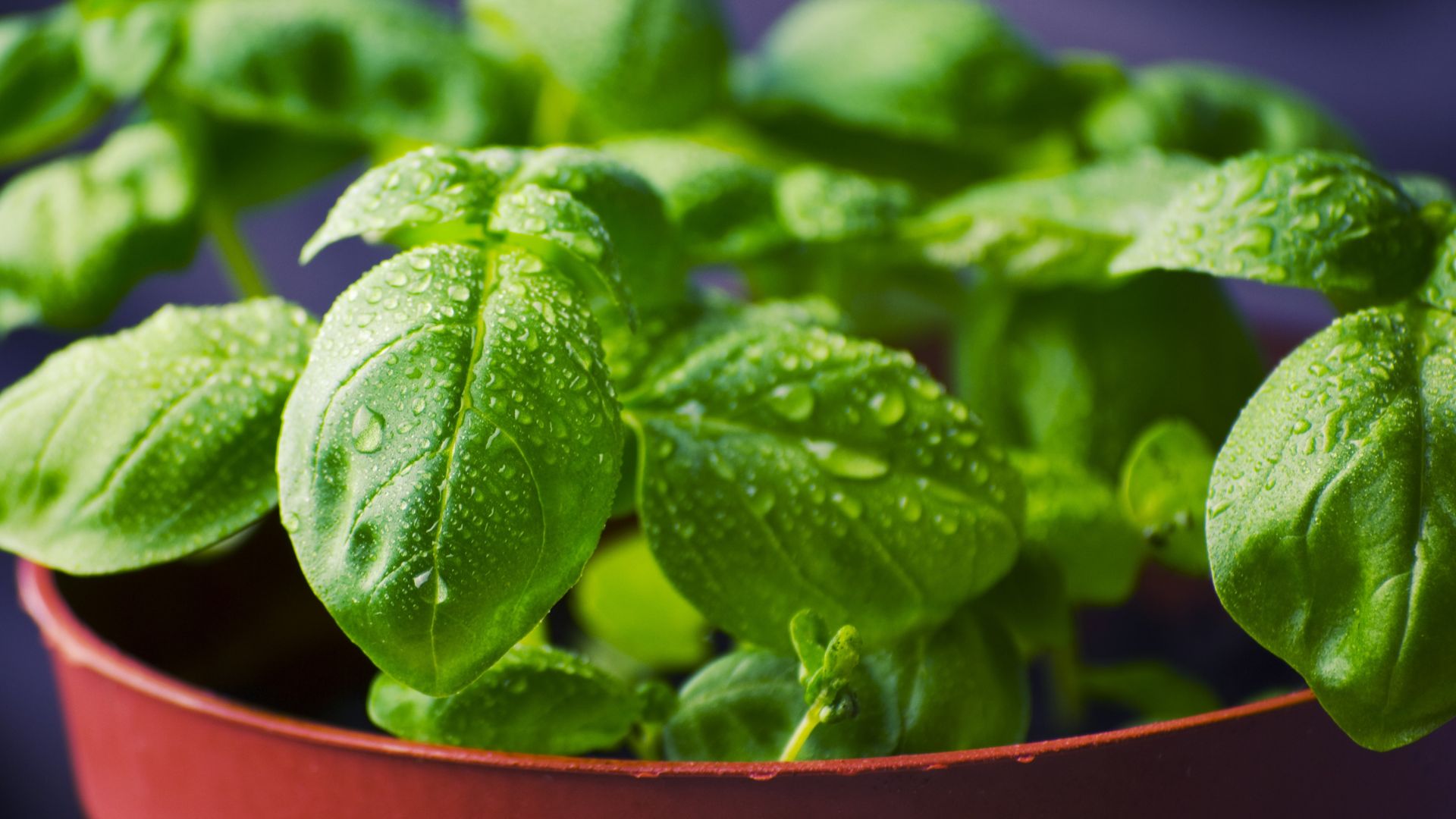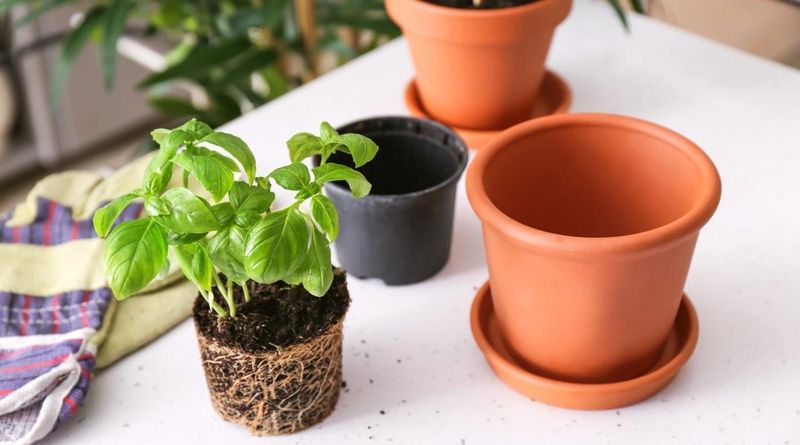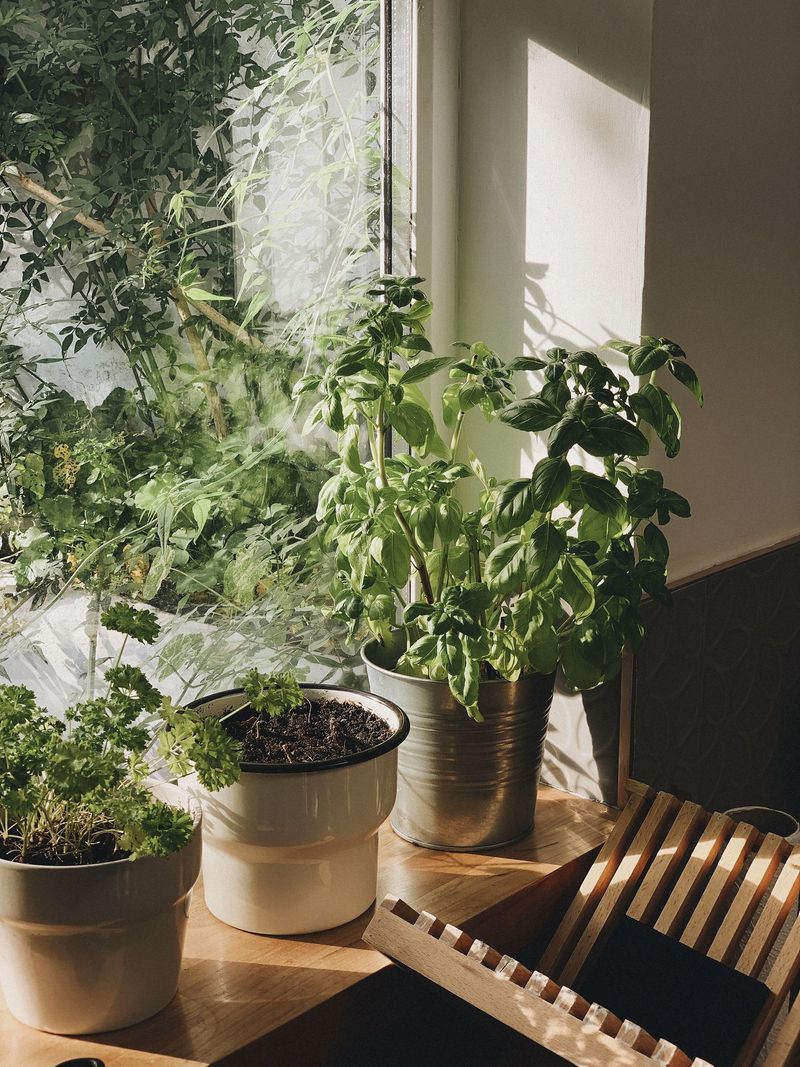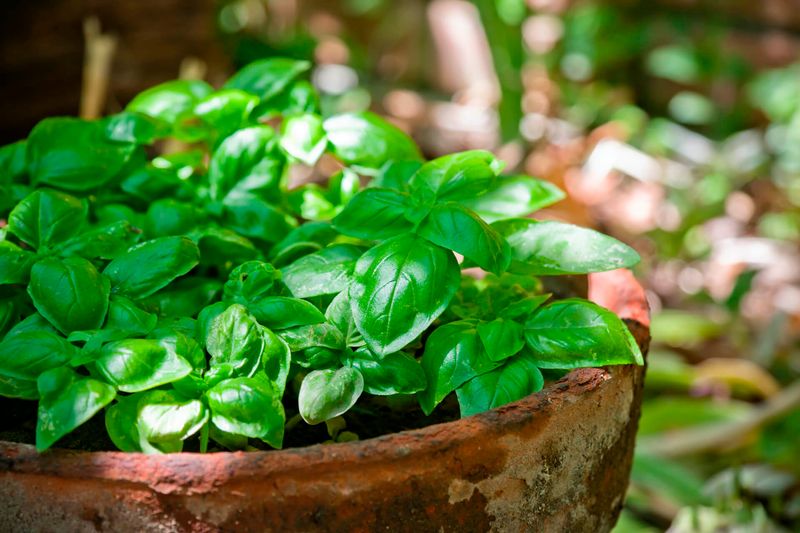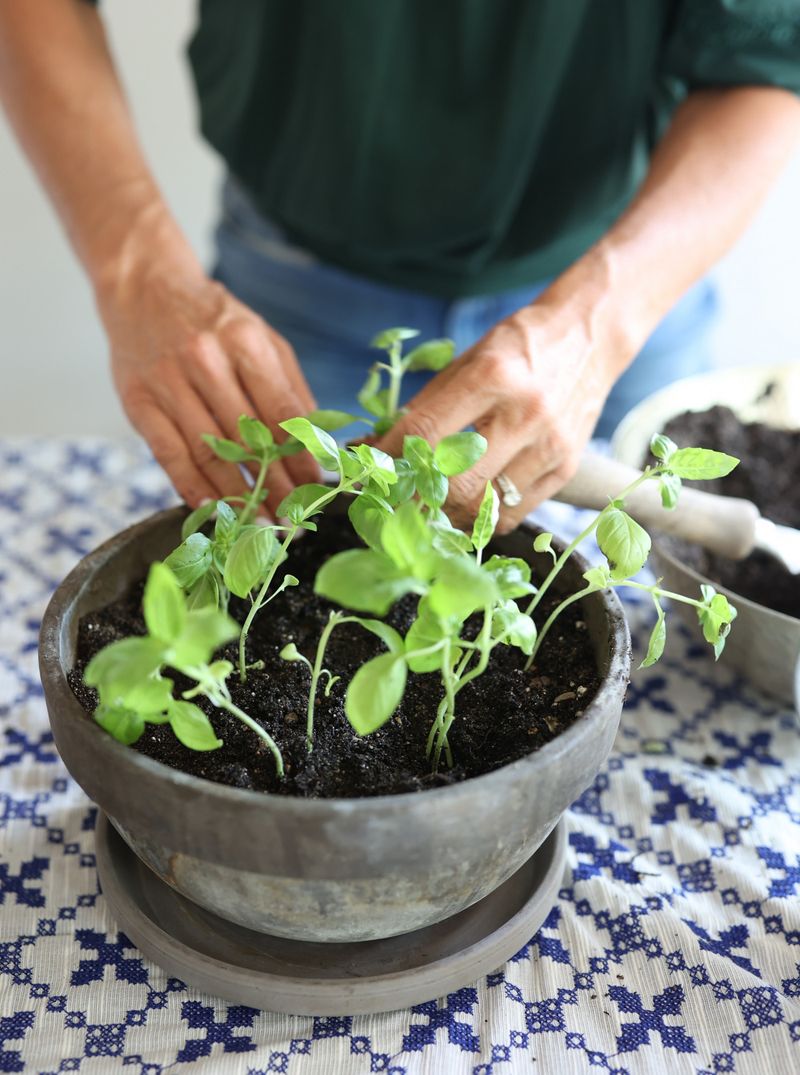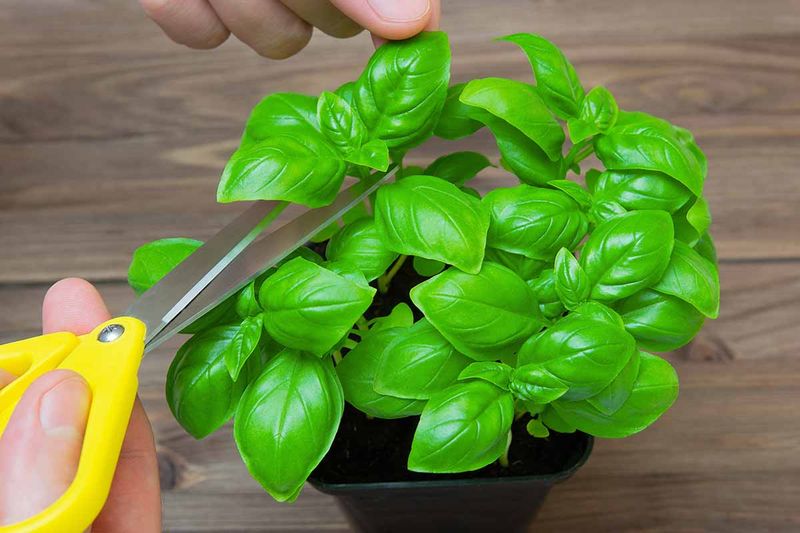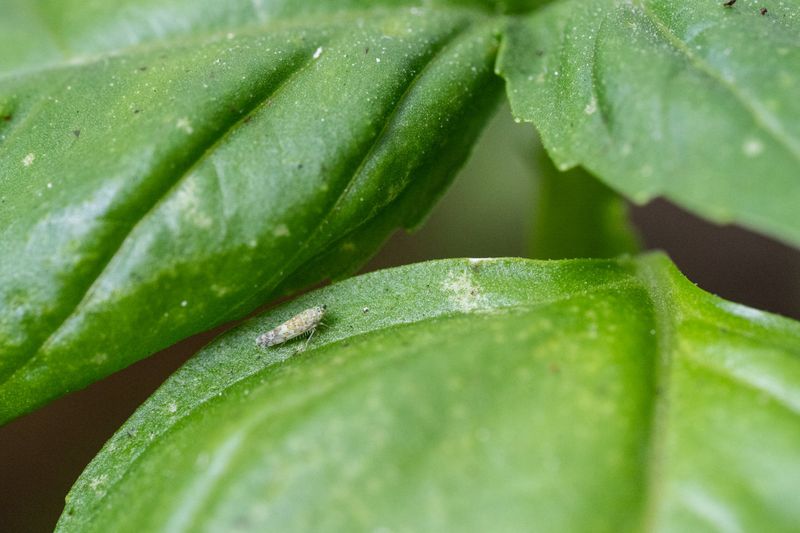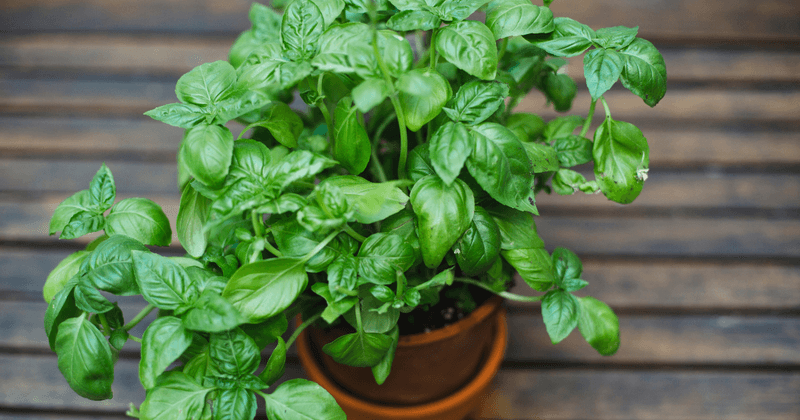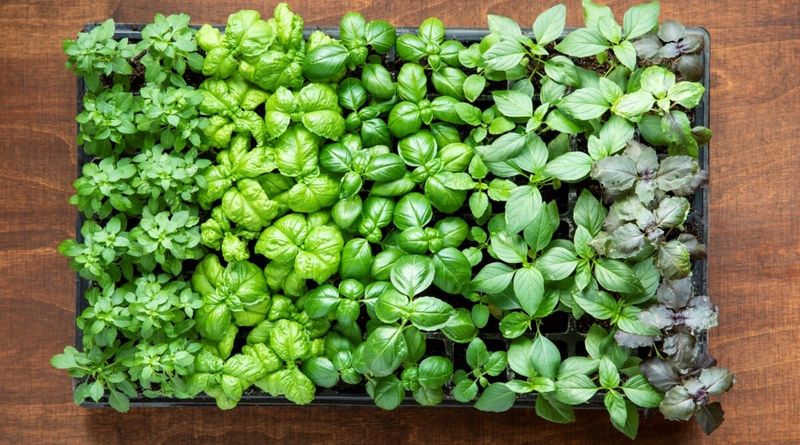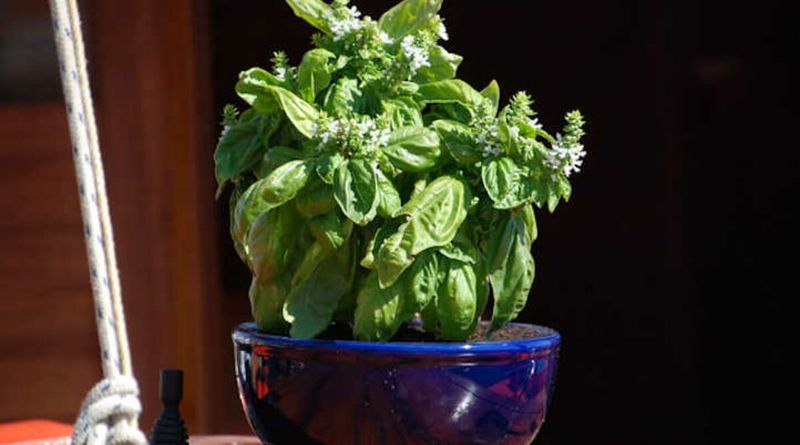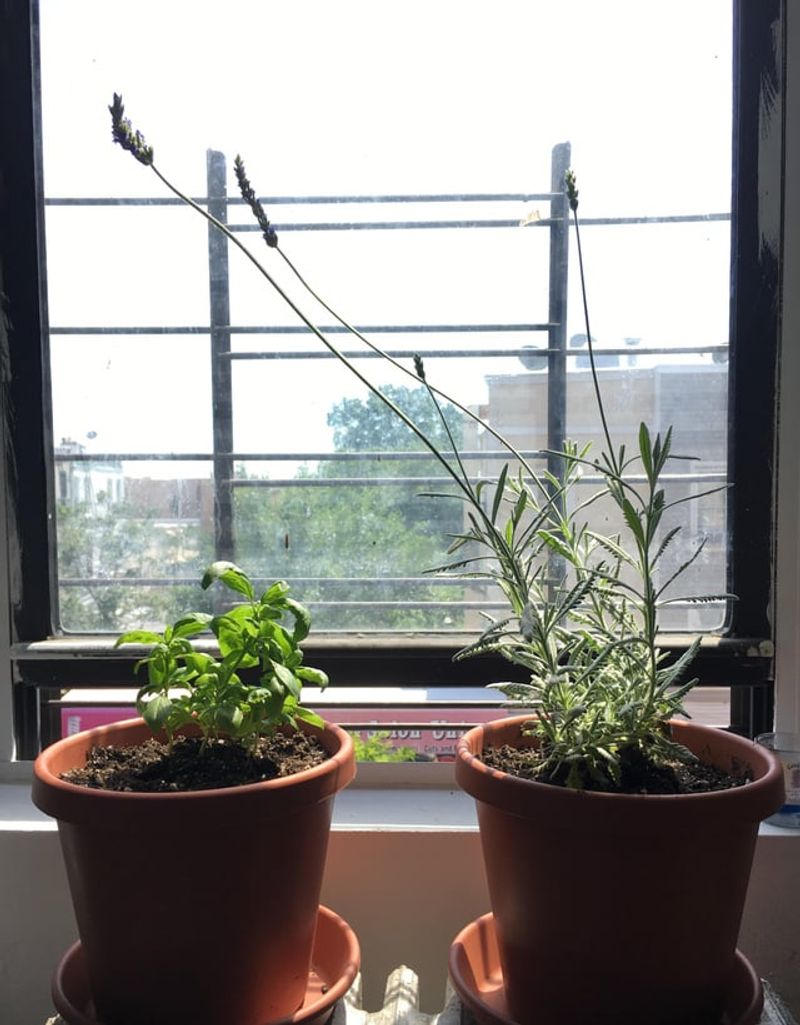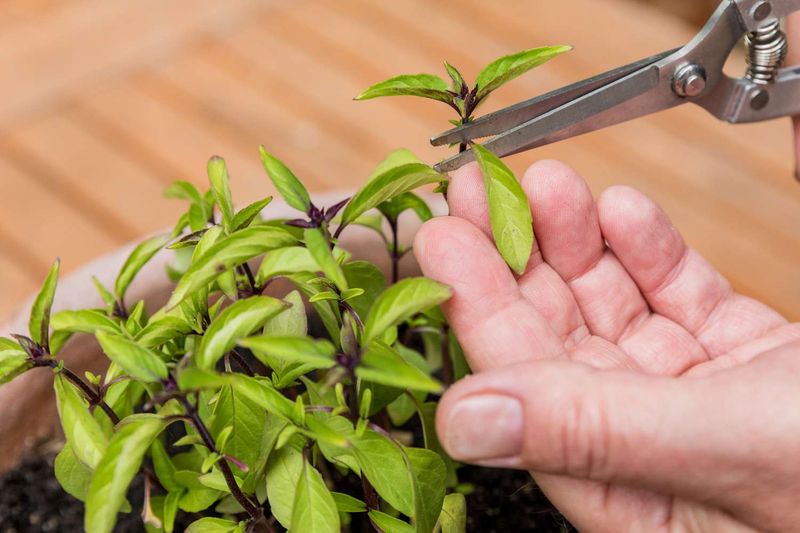Basil is one of those herbs that just makes everything better—fresh pasta, homemade pizza, even your kitchen windowsill. If you’re anything like me, you’ve probably bought a small pot from the store only to watch it slowly wilt away a week later.
Don’t worry, I’ve been there. Growing basil indoors isn’t just about having fresh herbs on hand (though that’s a huge perk)—it’s about creating a little green moment in your everyday space. And once you get the hang of it, it’s surprisingly simple and super satisfying.
Whether you’re completely new to indoor gardening or you’ve already got a few plants thriving in sunny corners, these easy, practical tips will help your basil grow strong and healthy. We’ll cover all the essentials you need to know.
1. Choose The Right Pot
When growing basil indoors, choosing the right pot is crucial. Choose a pot with drainage holes to prevent waterlogging, which can lead to root rot. A terracotta pot is an excellent choice as it allows air and moisture to circulate through the soil.
Position the pot on a sunny windowsill, ensuring it receives ample sunlight. The pot’s size should accommodate basil’s root system, which can grow surprisingly robust even in confined spaces.
Ensure there’s room for drainage and choose a saucer to catch excess water. A pot that’s too small can stunt growth, while too large may overwhelm.
2. Optimal Lighting
Basil craves sunlight. For indoor cultivation, place your basil where it gets at least six hours of direct sunlight daily. South-facing windows are ideal, capturing the most consistent light throughout the day.
If natural light is lacking, consider using a grow light to supplement. The leaves should be rich in color, reflecting healthy photosynthesis. Adjust the plant’s position occasionally to ensure even light exposure.
Without sufficient light, basil can become leggy, stretching towards the light source. Regularly rotate your plant to encourage uniform growth and to prevent it from leaning.
3. Watering Wisely
Watering basil requires a delicate balance. Overwatering can drown roots, while underwatering leaves them parched. Check the soil’s moisture level by inserting a finger about an inch deep—water only if it feels dry.
Use a watering can to gently moisten the soil, avoiding the leaves to prevent mold. Basil prefers consistently moist soil but not soggy, which can lead to fungus and other issues.
Consider the humidity of your home, as dry air can necessitate more frequent watering. Adjust your watering schedule seasonally, as indoor conditions change with the weather.
4. Proper Soil Mix
The right soil mix is vital for healthy basil growth. Use a well-draining potting mix enriched with organic matter. Incorporate perlite or sand to enhance drainage, preventing water stagnation.
A rich, dark soil with a loose structure allows roots to breathe and obtain nutrients. Avoid garden soil, which can compact easily and harbor pests. The potting mix should be able to retain moisture without becoming waterlogged.
Refresh the soil annually to replenish nutrients and maintain optimal growth conditions. This ensures your basil plant has everything it needs to thrive indoors.
5. Fertilizing Tips
Fertilizing is key to a healthy basil. Use a balanced liquid fertilizer every four to six weeks during active growth periods. Dilute the fertilizer to half strength to avoid overwhelming the plant.
This enriches the soil with essential nutrients, promoting robust leaf growth and color. Over-fertilizing can lead to nutrient burn, so moderation is crucial. Monitor your plant’s response and adjust as necessary.
In winter, reduce fertilizing as growth slows. Keeping the nutrients balanced ensures your basil maintains its vigor, providing fresh leaves for culinary use all year round.
6. Pruning For Growth
Pruning basil encourages bushy growth. Regularly snip the top leaves to stimulate branching, which leads to a fuller plant. Use sharp scissors or pruning shears for clean cuts.
Remove any flowers that appear, as blooming can reduce leaf flavor. Pruning not only shapes the plant but also helps in air circulation, reducing the risk of disease. Aim to prune in the morning when the plant is less stressed.
This practice invigorates your basil, allowing it to focus energy on new growth rather than seed production. Enjoy a more abundant harvest with timely trims.
7. Controlling Pests
Indoor basil isn’t immune to pests. Aphids and spider mites can be common invaders. Combat them naturally with a gentle soap solution spray, targeting the affected areas.
Regularly inspect your basil for early signs of infestation, such as discolored leaves or webbing. Keeping the plant healthy with proper care can also deter pests. Ensure adequate air circulation and avoid excessive humidity to limit pest attraction.
If pests persist, consider introducing beneficial insects like ladybugs. Vigilance and timely intervention protect your basil, keeping it beautiful and pest-free.
8. Adjusting Humidity
Basil thrives in moderate humidity. Indoor air can be dry, especially with heating systems. To maintain optimal conditions, use a small humidifier near your basil. This keeps the leaves hydrated and reduces stress.
Alternatively, place the pot on a tray filled with pebbles and water, allowing evaporation to naturally humidify the air. Avoid placing basil near drafty areas or vents, which can dry out the plant.
Monitor humidity levels and adjust as needed, particularly in winter when indoor air is drier. These adjustments help your basil flourish, mimicking its ideal environment.
9. Preventing Diseases
Disease prevention is easier than cure. Ensure your basil has good air circulation and is in a well-draining pot. Overhead watering can lead to leaf spots and mold, so water at the base.
Regularly remove any yellowing or wilted leaves to prevent disease spread. Keep the plant clean; dust can harbor spores. Avoid overcrowding to reduce competition for resources and space, which can lead to stress.
By maintaining these practices, your basil remains healthy and resilient against common indoor plant diseases. Consistent care is your best defense against pathogens.
10. Choosing The Right Variety
Not all basil is the same. Explore varieties like Genovese, Thai, or Lemon basil, each with unique flavors and growth habits. Choose a variety that suits your culinary needs and growing conditions.
Some basils are more compact, ideal for small spaces. Experimenting with different types can add interest to your indoor garden and enhance your cooking.
Consider the growth rate and leaf size; some may require more frequent pruning. Understanding your chosen variety helps in tailoring care, from watering to light needs. Discover the joy of diverse basil flavors right at home.
11. Temperature Control
Temperature plays a role in basil’s health. It prefers temperatures between 70-80°F. Sudden changes can stress the plant. Keep basil away from cold drafts and ensure it doesn’t get too close to heat sources.
During colder months, indoor temperatures can fluctuate, affecting growth. Consider using a digital thermometer to monitor conditions. If temperatures drop, move basil to a more stable environment.
Consistent warmth encourages vigorous growth and prevents shock. Adjustments ensure that even in winter, your basil remains a thriving part of your indoor garden.
12. Companion Planting
This enhances basil’s vitality. Pair basil with tomatoes or peppers; they thrive together, benefiting each other. These plants can share light and resources efficiently. Basil’s scent can repel certain pests, offering protection to its companions.
Space them appropriately to ensure adequate air flow and light penetration. This practice mimics natural ecosystems, promoting a balanced indoor garden. Companion planting adds visual diversity and can improve overall plant health.
Experiment with combinations to discover what works best in your space, enriching your indoor gardening experience.
13. Regular Harvesting
Regular harvesting keeps basil productive. Use your thumb and index finger to pinch leaves from the top. This encourages the plant to produce more foliage rather than flowers. Harvesting in the morning preserves essential oils and flavor.
Avoid removing more than a third of the plant at once to prevent stress. Regularly check for mature leaves that shade new growth.
This practice not only provides fresh herbs for your kitchen but also promotes a healthier, more robust plant. Enjoy continuous harvests by timing your picks correctly, feeding both your plant and culinary needs.
14. Understanding Growth Cycles
Understanding basil’s growth cycle aids in care. Basil grows in stages—from seedling to mature plant. Recognize each phase to adjust care, such as watering and fertilizing. Seedlings need gentle light and water, while mature plants require more robust support.
Growth slows in winter; adjust your care routine accordingly. Knowing when to expect blooms helps in managing pruning. This knowledge empowers you to anticipate needs, from planting to harvest.
Observing your basil’s life cycle deepens your connection to your plant, making indoor gardening a more fulfilling experience.
15. Using Basil Beyond The Kitchen
Basil isn’t just for cooking. Its leaves can freshen indoor air, infusing a subtle herbal aroma. Create basil-infused water for a refreshing drink or use leaves in homemade crafts.
Basil’s scent can enhance relaxation, adding to your home’s ambiance. Explore its decorative potential by using sprigs in floral arrangements. Share your basil bounty with friends, introducing them to its versatility.
Using basil beyond culinary applications enriches your indoor gardening experience, offering both practical and creative benefits. Discover new ways to enjoy basil, making the most of your indoor harvest.

